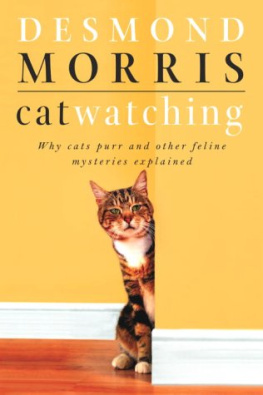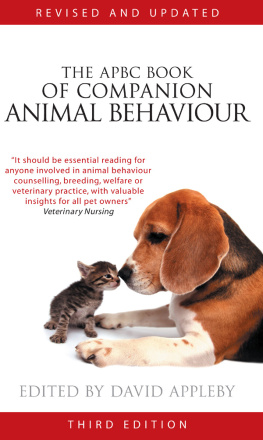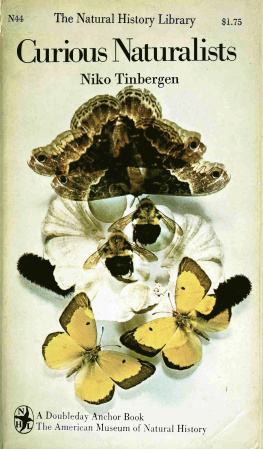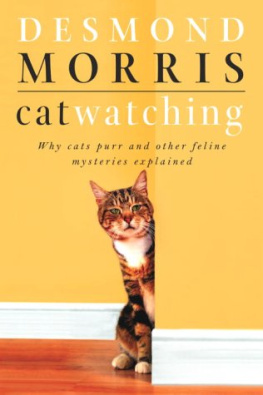Annotation
Desmond Morris is a professional zoologist and studied animal behaviour with the famous Dutch ethologist Niko Tinbergen at Oxford University.
He then moved on to become Curator of Mammals at London Zoo, where he established his own behaviour research group. Although for the past twenty years he has in his books (from The Naked Ape to Bodywatching) concentrated on the human species, his professional eye has constantly been focused on animals and their fascinating behaviour. The most recent fruits of this interest are the bestselling Catwatching ('No cat lover should be without it." Doris Lessing, New Scientist) where he answers the following questions and many more:
Why does a cat purr?
Why does a cat like being stroked?
Why does a cat tear at the fabric of your favourite chair?
Why does a cat roll over to lie on its back when it sees you?
Why does a cat rub up against your leg when it greets you?
Why do some cats hop up on their hind legs when greeting you?
Published by Jonathan Cape Ltd, 1986 This disk version of 'Catwatching' has a hard page break before each new question. Your computer's search facility should enable you to find the title of a question.
Desmond Morris
Catwatching
Contents
Introduction
Why does a cat purr?
Why does a cat like being stroked?
Why does a cat tear at the fabric of your favourite chair?
Why does a cat roll over to lie on its back when it sees you?
Why does a cat rub up against your leg when it greets you?
Why do some cats hop up on their hind legs when greeting you?
Why does a cat trample on your lap with its front paws?
Why does a cat bury its faeces?
Why does a cat spend so much time grooming its fur?
Why does a cat wag its tail?
Why does a tomcat spray urine on the garden wall?
How large is a cat's territory?
How sociable are cats?
Why do cats keep crying to be let out and then cry to be let in again?
What does a cat signal with its ears?
How do cats fight?
Why does a cat arch its back when it sees a strange dog?
Why does a cat hiss?
Why does a cat wag its tail when it is hunting a bird on a lawn?
Why does a cat chatter its teeth when it sees a bird through the window?
Why does a cat sway its head from side to side when staring at its prey?
Why does a cat sometimes play with its prey before killing it?
How does a cat prepare its food?
How efficient is the cat as a pest-killer?
Why do cats present freshly caught prey to their human owners?
Why do cats eat grass?
How does a cat use its whiskers?
Why do cats' eyes glow in the dark?
Why do cats' eyes contract to a vertical slit?
Can cats see colours?
How does a female cat deal with her new-born kittens?
How do kittens avoid squabbling when feeding from the mother?
At what rate do kittens develop?
Why does a cat move its kittens to a new nest?
How do kittens learn to kill?
Why does a kitten sometimes throw a toy into the air when playing?
When do cats become sexually mature?
How fast do cats breed?
How do cats perform their courtship?
Why does the tom grab the female by the scruff of the neck when mating?
Why does the female scream during the mating act?
Why do cats sneer?
How does a cat manage to fall on its feet?
How do cats behave when they become elderly?
Why does a cat lick its face when it is not dirty?
Why do cats react so strongly to catnip?
How does a cat find its way home?
Can cats predict earthquakes?
Why do we talk about catnaps?
Why are cat-owners healthier than other people?
Why is a female cat called a queen?
Why is a male cat called a tom?
Why is a brothel called a cathouse?
Why do we say 'he let the cat out of the bag'?
Why do we speak of not having a 'cat-in-hell's' chance?
Why do we speak of someone 'having kittens'?
Why does a cat have nine lives?
Why do we say 'there is no room to swing a cat'?
Why do we say 'it is raining cats and dogs'?
Introduction
The domestic cat is a contradiction. No animal has developed such an intimate relationship with mankind, while at the same time demanding and getting such independence of movement and action. The dog may be man's best friend, but it is rarely allowed out on its own to wander from garden to garden or street to street. The obedient dog has to be taken for a walk. The headstrong cat walks alone.
The cat leads a double life. In the home it is an overgrown kitten gazing up at its human owners. Out on the tiles it is fully adult, its own boss, a free-living wild creature, alert and self-sufficient, its human protectors for the moment completely out of mind. This switch from tame pet to wild animal and then back again is fascinating to watch. Any cat-owner who has accidentally come across their pet cat out-of-doors, when it is deeply involved in some feline soap opera of sex and violence, will know what I mean. One instant the animal is totally wrapped up in an intense drama of courtship or status. Then out of the corner of its eye it spots its human owner watching the proceedings.
There is a schizoid moment of double involvement, a hesitation, and the animal runs across, rubs against its owner's leg and becomes the housekitten once more.
The cat manages to remain a tame animal because of the sequence of its upbringing. By living both with other cats (its mother and litter-mates) and with humans (the family that has adopted it) during its infancy and kittenhood, it becomes attached to both and considers that it belongs to both species. It is like a child that grows up in a foreign country and as a consequence becomes bilingual. The cat becomes bi-mental. It may be a cat physically, but mentally it is both feline and human. Once it is fully adult, however, most of its responses are feline ones and it has only one major reaction to its human owners. It treats them as pseudoparents. This is because they took over from the real mother at a sensitive stage of the kitten's development and went on giving it milk, solid food and comfort as it grew up.
This is rather different from the kind of bond that develops between man and dog. The dog does see its human owners as pseudo-parents, like the cat. On that score the process of attachment is similar. But the dog has an additional link. Canine society is group-organized, feline society is not. Dogs live in packs with tightly controlled status relationships between the individuals. There are top dogs, middle dogs and bottom dogs, and under natural circumstances they move around together, keeping tabs on one another the whole time. So the adult pet dog sees its human family both as pseudo-parents and as the dominant members of its pack.
Hence its renowned reputation for obedience and its celebrated capacity for loyalty. Cats do have a complex social organization, but they never hunt in packs. In the wild most of their day is spent in solitary stalking. Going for a walk with a human therefore has no appeal for them. And as for 'coming to heel' and learning to 'sit' and 'stay', they are simply not interested. Such manoeuvres have no meaning for them.
So the moment a cat manages to persuade a human being to open a door (that most hated of human inventions), it is off and away without a backward glance. As it crosses the threshold the cat becomes transformed. The kitten-of-man brain is switched off and the wild-cat brain is clicked on. The dog, in such a situation, may look back to see if its human pack-mate is following to join in the fun of exploring, but not the cat. The cat's mind has floated off into another, totally feline world, where strange bipedal apes have no place.


















